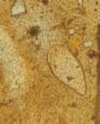Proposed morbidity markers among Schistosoma mansoni patients
- PMID: 37415754
- PMCID: PMC10321587
- DOI: 10.4103/tp.tp_46_22
Proposed morbidity markers among Schistosoma mansoni patients
Abstract
Background: Fecal calprotectin (FC) and fecal occult blood (FOB) were suggested as potential inflammatory markers for assessing intestinal schistosomiasis morbidity that are conventionally detected through invasive methods.
Aim and objectives: The present work aimed to evaluate FC and FOB as morbidity markers of Schistosoma mansoni infection before and after praziquantel treatment.
Materials and methods: A total of 205 stool samples (117 schoolchildren and 88 adults) were collected and examined by Kato Katz. A questionnaire enquiring about diarrhea, history of blood in stool, and abdominal pain was designed and applied.
Results: S. mansoni prevalence rates were 20.5% and 11.36% among children and adults, respectively; the majority of cases had light infection intensity. FC and FOB were studied among 25 cured S. mansoni cases (17 children and 8 adults) pre and one-month post treatment. Before treatment, six and four children of moderate and high S. mansoni infection intensity tested positive for FC and FOB, respectively, all turning negative after treatment. FC showed borderline statistical significance before and after treatment among children. However, all adults tested negative for FC and FOB.
Conclusion: FC and FOB could be possibly used as morbidity monitoring tools for S. mansoni infection in children with moderate and high infection intensity.
Keywords: Fecal calprotectin; Schistosoma mansoni; fecal occult blood; morbidity markers; praziquantel.
Copyright: © 2023 Tropical Parasitology.
Conflict of interest statement
There are no conflicts of interest.
Figures
References
-
- McManus DP, Dunne DW, Sacko M, Utzinger J, Vennervald BJ, Zhou XN. Schistosomiasis. Nat Rev Dis Primers. 2018;4:13. - PubMed
-
- Aagaard-Hansen J, Mwanga JR, Bruun B. Social science perspectives on schistosomiasis control in Africa: Past trends and future directions. Parasitology. 2009;136:1747–58. - PubMed
-
- Gryseels B, Polman K, Clerinx J, Kestens L. Human schistosomiasis. Lancet. 2006;368:1106–18. - PubMed
LinkOut - more resources
Full Text Sources


